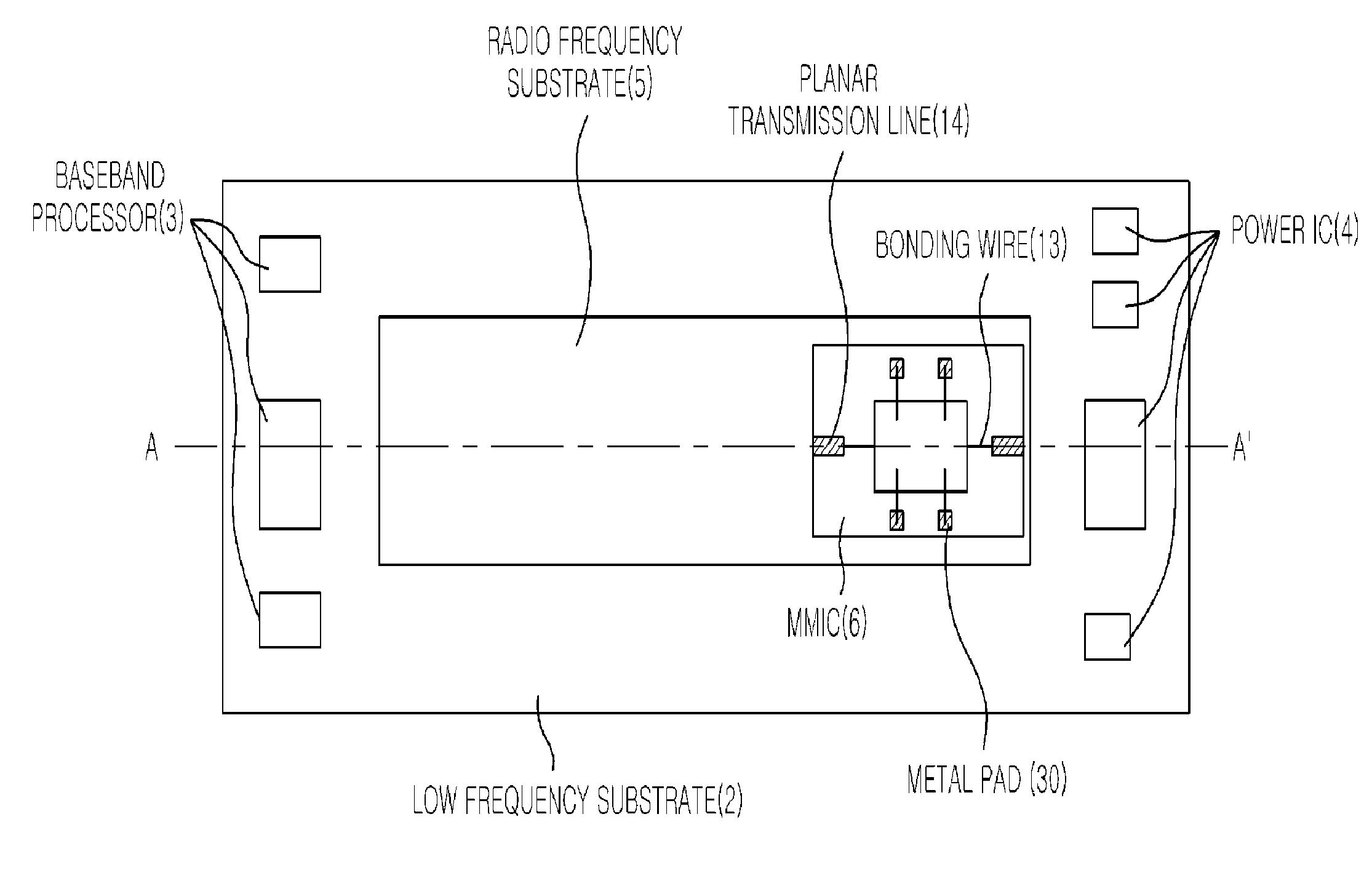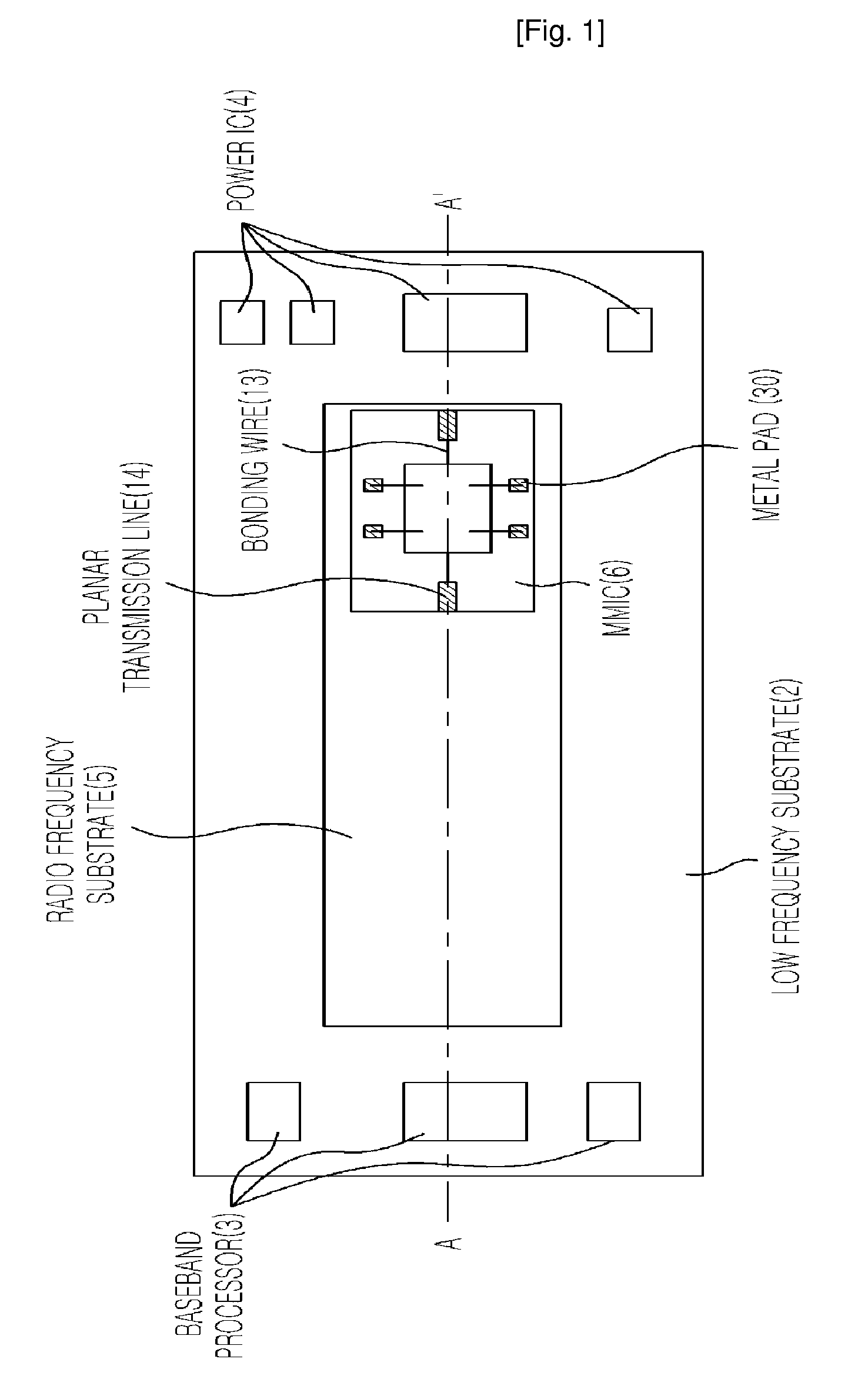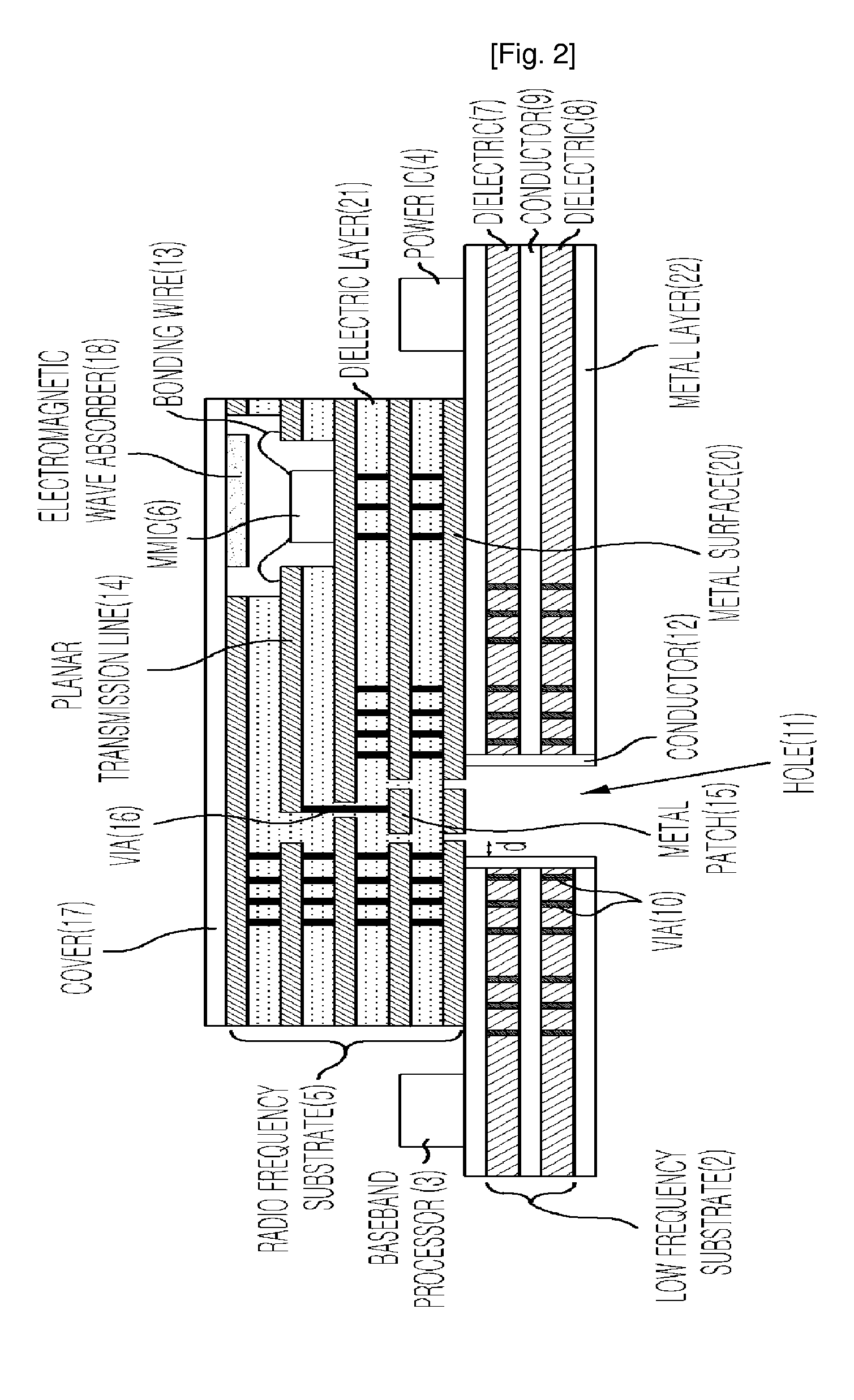Mode Transition Circuit for Transferring Radio Frequency Signal and Transceiver Module Having the Same
- Summary
- Abstract
- Description
- Claims
- Application Information
AI Technical Summary
Benefits of technology
Problems solved by technology
Method used
Image
Examples
Embodiment Construction
[0018]Other objects and aspects of the invention will become apparent from the following description of the embodiments with reference to the accompanying drawings, which is set forth hereinafter.
[0019]FIG. 1 is a top view illustrating a transition circuit for transferring a RF signal in accordance with an embodiment of the present invention, FIG. 2 is a cross-sectional view of FIG. 2 taken along the line A-A′ and FIG. 3 is a bottom view of FIG. 1.
[0020]The present invention proposes a mode transition circuit for transferring a Radio Frequency (RF) signal generated from a RF substrate 5 to a module such as an antenna through a planar transmission line 14 and a waveguide including vias 5 and metal patches 15 formed inside the RF substrate 5 and a hole 11 formed inside a low frequency substrate 2, and a transceiver module having the same.
[0021]As described above, the present invention proposes the mode transition circuit for transferring a RF signal and a transceiver module having the...
PUM
 Login to View More
Login to View More Abstract
Description
Claims
Application Information
 Login to View More
Login to View More - R&D
- Intellectual Property
- Life Sciences
- Materials
- Tech Scout
- Unparalleled Data Quality
- Higher Quality Content
- 60% Fewer Hallucinations
Browse by: Latest US Patents, China's latest patents, Technical Efficacy Thesaurus, Application Domain, Technology Topic, Popular Technical Reports.
© 2025 PatSnap. All rights reserved.Legal|Privacy policy|Modern Slavery Act Transparency Statement|Sitemap|About US| Contact US: help@patsnap.com



